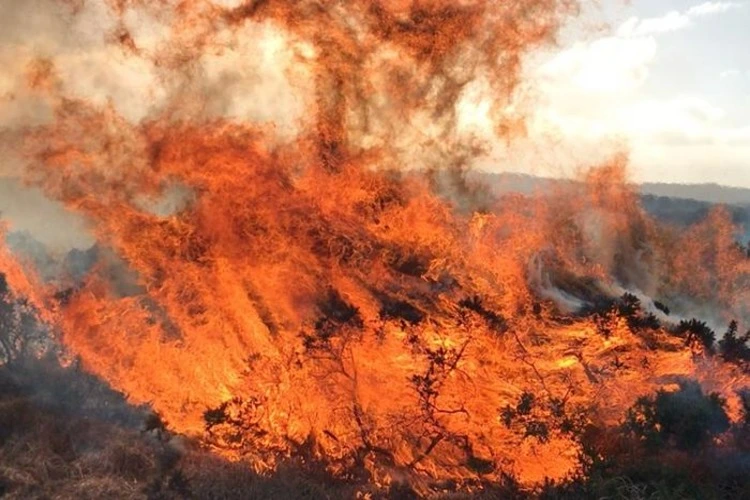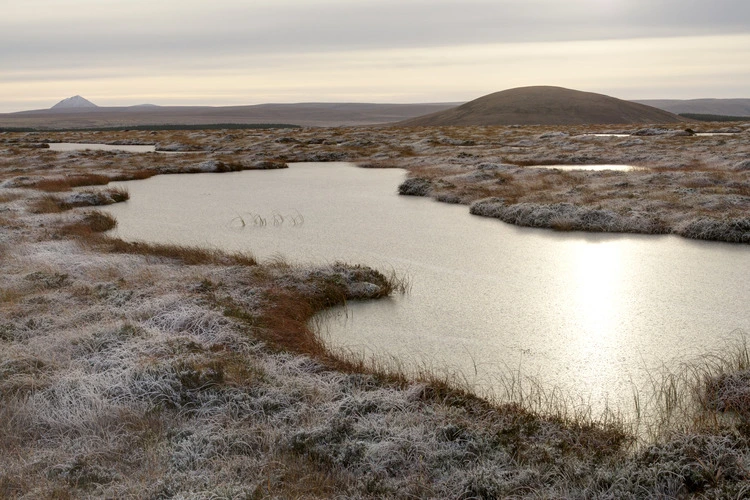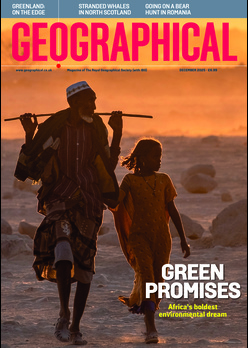
New research shows wildfire season is becoming more intense in the UK and burning peatlands pose the biggest climate threat
By
In 2022, the UK experienced more than 44,000 wildfires. From those impacting grassland to fires ravaging woodland and crops, wildfires across the country can devastate ecosystems and wildlife populations, permanently altering natural landscapes as they wreak damage.
Now, a new study has revealed the extent to which wildfires are continuing to impact the UK. Researchers at the University of Cambridge have shown that as UK springs and summers get hotter and drier thanks to climate change, the country’s wildfire season is becoming stretched and more intense.
Enjoying this article? Check out our related reads:
To obtain their results, researchers mapped all UK wildfires over a period of 20 years, monitoring how they burn, their total carbon emissions from fires and the relationship between climate change and fires.
Read on to take a deep dive into where wildfires are happening in the UK, what is exacerbating them, and their environmental impact in the country…
The peatland problem
In the latest study, researchers found that since 2001, despite contributing to just 25 per cent of the UK’s total land area that burns each year, peatlands are responsible for up to 90 per cent of annual UK fire-driven carbon emissions.
These wet and waterlogged ecosystems are made up of soil consisting of organic matter from decaying plants. Covering around nine per cent of the UK, peatlands are vital carbon stores and collectively remove more than three million tonnes of carbon dioxide from the atmosphere each year.
However, the increasingly dry and hot conditions being brought about by climate change means peat can dry out. This then causes it to ignite, beginning a wildfire and releasing stored carbon out into the atmosphere.

Fires that occur on carbon-rich peatlands pose a greater risk to the planet; releasing larger quantities of carbon emissions into the atmosphere than those on heathland and moors. Between 2001 and 2021, around 800,000 tonnes of carbon was emitted from fires on UK peatlands, according to the latest Cambridge study. And if the planet warms by 2C, it is estimated carbon emissions from fires on UK peatland are likely to rise by at least 60 per cent.
When peat is burned, it can take centuries to reaccumulate and leave large areas without the important carbon stores that were once there. One of the mitigation measures scientists are focusing on is to re-wet peatlands; by ensuring that these areas are moist, it reduces the risk of them igniting during hot conditions.
When and where do they occur?
Although the UK experiences less wildfires than other countries – such as those in the Mediterranean – they do exist, particularly where grassland or heathland occur close to woodlands.
An average of 5,600 hectares of moor and heathland burn across the UK each year, as well as 2,500 hectares of peatland. This is a total area of land equivalent to more than 12,000 football pitches.
Peatlands in Saddleworth Moor in the Peak District and Flow Country in northern Scotland have been home to huge wildfires in previous years, with significant environmental repercussions. In 2018, the Saddleworth Moor fire emitted 24,000 tonnes of carbon, while the 2019 Flow Country fire released 96,000 tonnes of carbon from burning peat. Such vast CO2 emissions only exacerbate the greenhouse effect, driving the planet’s temperatures up.
And in the case of the Saddleworth Moor fire, researchers discovered that air pollution spiked in the nearby areas of Wigan, Manchester and Liverpool following the event. Levels of tiny particulates, known as PM2.5, reached double the safe limit recommended by the WHO.
Environmental risks of wildfires are clear, then – and it seems that these may become more prevalent. That’s because in recent years, the time frame in which wildfires can occur in the UK has become steadily longer. In 2011-2016, the UK’s ‘fire season’ – when fires occur on natural land – was anywhere between one to four months. By the period 2017-2021, those figures had dramatically risen to between six and nine months, according to this latest research from Cambridge University.
In particular, Scotland has experienced a marked change in its fire season over the last decade, where now almost half of all UK fires occur.
Usually, UK wildfires have been known to occur during spring, but recent research led by Met Office Scientist Matthew Perry has projected large increases in hazardous fire weather conditions in summer, possibly even extending into late summer and early autumn.




